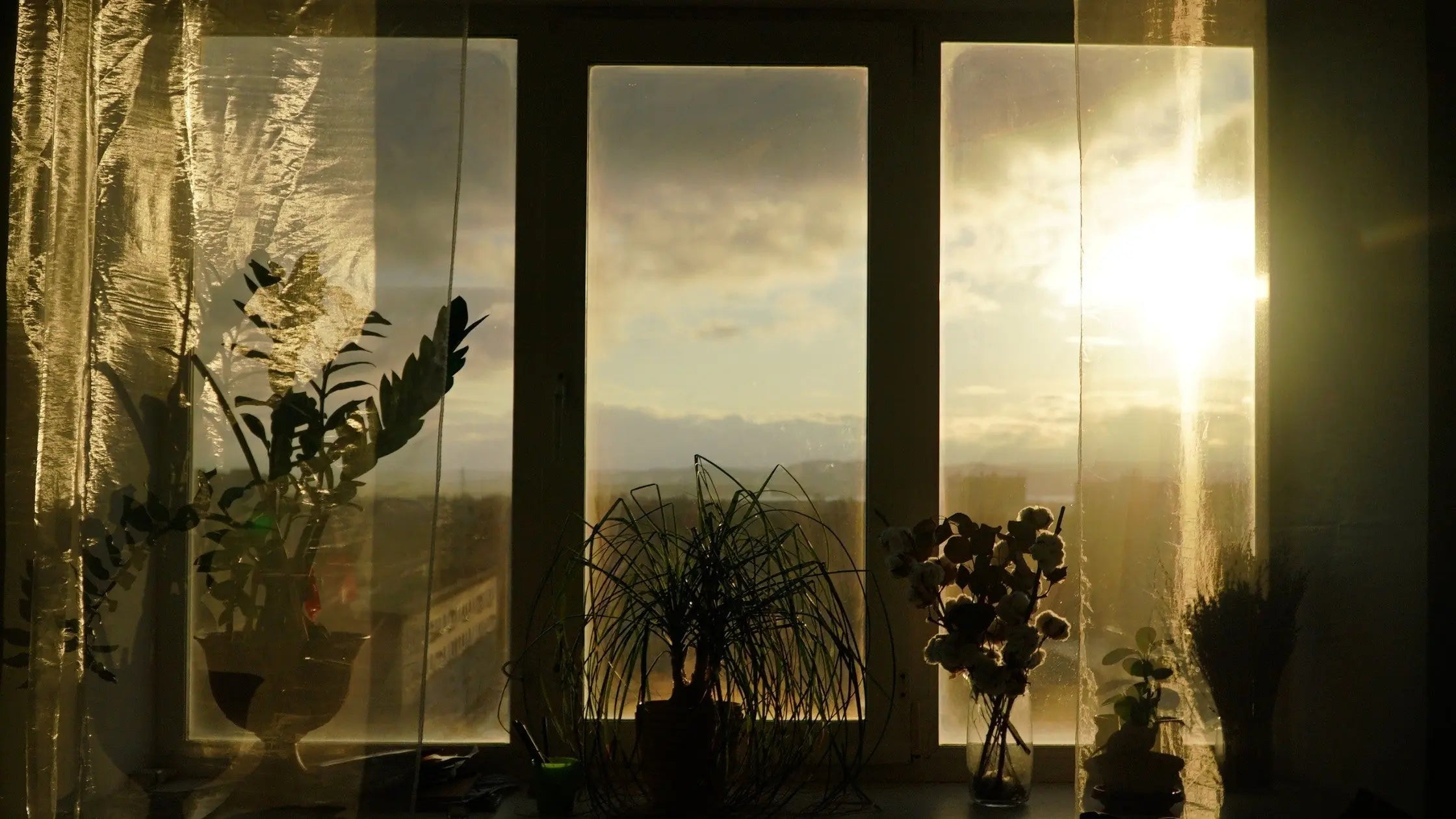Bringing greenery indoors can brighten any space, but houseplants often struggle to get the right amount of light. Light issues are common, especially in homes where sunlight is limited by direction, window size, or seasonal changes. Most often, the problem is insufficient light, particularly in winter. However, it’s also possible for some houseplants to receive more light than they can handle. Understanding the signs of both too little and too much light is key to keeping your houseplants happy and thriving.
Too Little Light
Signs of insufficient light can take a while to appear, but they’re usually easy to fix. Once you spot the symptoms, you can adjust your plant’s light exposure accordingly.
1. Leggy Growth
When stems stretch out and leaves become sparse, it’s usually a sign that your plant is reaching for more light. The space between the leaves (nodes) increases, making the plant look spindly and weak. The leaves might also appear smaller than usual. This elongated growth is your plant’s way of trying to find better light.
2. Stunted or No Growth
If your plant seems to have hit a pause button on growth, light might be the issue. Some plants react to low light by conserving energy and halting new leaf development. If you’ve noticed that your plant hasn’t produced any new growth for weeks or months, and all other care factors are ideal, insufficient light is a likely culprit.
3. No Flowers
Plants that normally bloom may stop doing so in low light. Flowering requires a lot of energy, and without adequate light, your plant can’t produce enough food to support blossoms. If your blooming houseplant hasn’t flowered in a long time despite regular care, try increasing its exposure to light.
4. Leaning Toward the Light
Plants that aren’t getting enough light often grow toward the nearest source, like a window. If your plant starts leaning or twisting in one direction, it’s signaling that it needs more light. Rotating the pot occasionally can help balance growth, but it’s even better to move the plant closer to a brighter area.
5. Fading Variegation or Missing Leaf Features
Plants with variegated leaves—those with lighter or patterned colors—may lose their markings in dim light. The leaves may revert to solid green as the plant produces more chlorophyll to compensate. In plants like monstera, a lack of light can cause newer leaves to lack the signature splits or holes, as the plant tries to increase its light-absorbing surface.
Too Much Light
While less common, too much light can also be harmful, especially to shade-loving plants or those not adapted to bright, direct sun. These plants may show signs of stress if exposed to harsh lighting conditions.
6. Pale or Burnt Leaves
Excessive light can bleach leaves, causing them to appear pale or faded. Over time, this can lead to brown, crispy edges or spots. Sun damage is particularly common when indoor plants are placed too close to a sunny window or moved outdoors without gradual exposure. Plants in southern-facing windows during summer are especially vulnerable.
Correcting Light Imbalances
Knowing the signs is only half the battle—adjusting your plant’s environment is where real change happens.
Adjusting Natural Light
To increase light, move the plant closer to a window or choose one that receives more sunlight throughout the day. South- and west-facing windows usually offer the most light, while north-facing windows offer the least. To reduce light, shift your plant away from the window, use sheer curtains, or relocate it to a spot with indirect light.
Using Artificial Lights
In some homes, natural light just isn’t enough. Supplemental lighting can make a big difference. LED grow lights provide the right spectrum for plant health and can be used to extend daylight hours or increase intensity. Just be sure to place them at an appropriate distance—usually around 12 to 24 inches above the plant—for effective results. Lights too far away may be ineffective, while those too close can cause burns.
Balancing Duration and Intensity
Plants need a balanced combination of light duration and intensity. You can increase duration by leaving grow lights on for longer periods or increase intensity by placing plants in brighter locations. However, more is not always better—light should be increased gradually, especially if your plant has been in a low-light setting for a long time.
Monitor and Adjust
Keep an eye on how your plant responds to changes. If it starts perking up—producing new growth, brightening in color, or developing features like variegation or fenestration—it’s likely receiving better light. On the other hand, if new leaves are smaller, discolored, or scorched, adjust accordingly.
Final Tips
-
Rotate plants regularly to ensure even growth.
-
Use mirrors or reflective surfaces to bounce light into darker areas.
-
Clean windows and leaves to maximize light absorption.
-
Observe seasonal changes and shift plant locations if needed.
In summary, understanding and observing your plant’s behavior is the best way to determine if it’s getting the right amount of light. Whether your plant needs more brightness or a little shade, small changes can make a big difference. With proper attention and adjustments, your indoor plants will thrive year-round.










